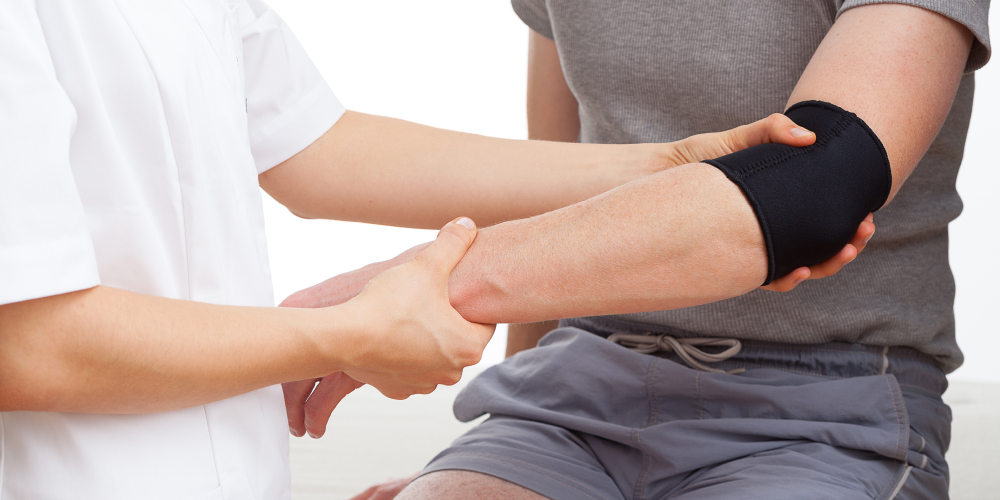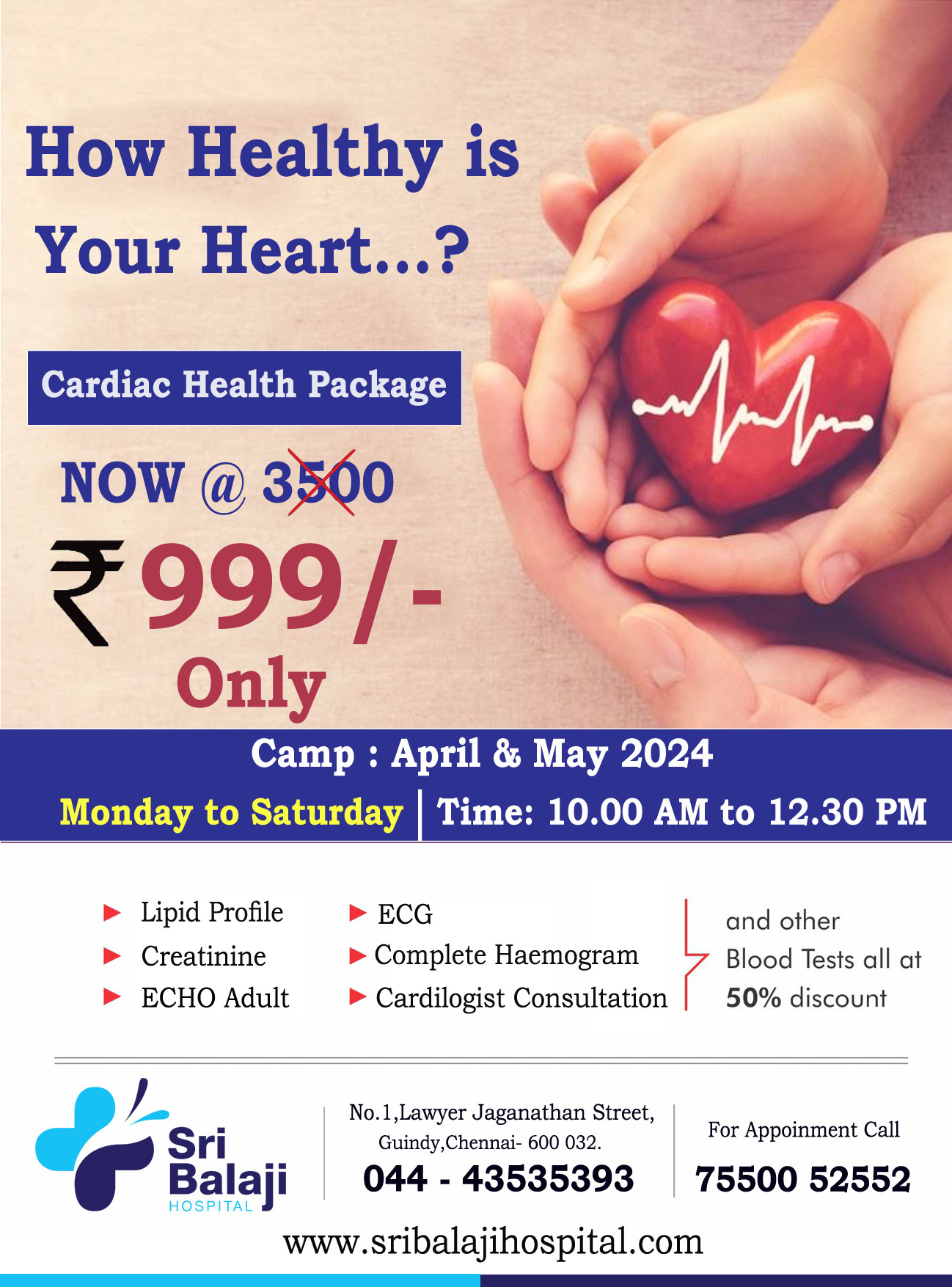While sports injuries are a common part of an athlete's career, their effects can be physically and psychologically damaging, potentially threatening one's career or fitness ambitions. Here at Sri Balaji Hospital, we aim to raise awareness and reassure the injured that early and accurate diagnosis can help you bounce back stronger. We also aim to spread awareness about the latest advances available to improve athletic performance after injury and to facilitate a return to strength after correct treatment and rehabilitation. We shed light on factors that may have contributed to the injury's origin and implement changes to prevent similar occurrences in the future of their sporting careers. At Sri Balaji Hospital, cutting-edge technology meets understanding and specialized exercise to create a better tomorrow for athletes and prospective fitness enthusiasts, enabling them to achieve their dreams and ambitions.
Understanding The Nature of Your Injury
The most assured start to treating injuries begins with understanding the injury itself. In my experience, the most important factor is listening to the patient's history of what caused the injury initially. I find this to be significant because it not only helps me understand the point at which the injury likely occurred but also provides insight into future treatment options and a blueprint for preventing such injuries from reoccurring. An elaborate history of how the injury occurred is always followed by a thorough physical examination, which gives me an idea of the extent of the injury and its severity (mild, moderate, or severe). This guides me in planning the next steps for successful treatment and ideal outcomes.
Evaluating or Confirming The Diagnosis
After thoroughly understanding the condition through a detailed history and examination, my suspicions will be confirmed through imaging studies, which may include one or more of the following, as indicated:
X-rays
A quick X-ray - the simplest of all imaging studies, will shed light on any fractures (mild or severe) or dislocations. X-rays are always my first step in the evaluation of sports injuries.
CT Scan
CT scans help in magnifying the findings noted on an X-ray and create a 3-dimensional image of the bone/ joint in question.
Ultrasound
Although the aforementioned modalities of treatment are very accurate in evaluating bone and joint injuries, they play a limited role in assessing the status of the soft tissue surrounding the injury site. This is where ultrasound studies and MRI imaging come into play. Ultrasound imaging is frequently used by me for diagnostic purposes (such as diagnosing superficial muscle injuries) as well as for therapeutic purposes (ultrasound-guided injections to achieve minimally invasive yet powerful, long-lasting pain relief solutions without surgery).
Magnetic Resonance Imaging (MRI)
MRI scans provide the most comprehensive insight into the entire bone, joint, and surrounding soft tissue structures. These are often employed when an in-depth understanding of every structure is necessary.
Non-surgical Treatment for Sports Injuries at Sri Balaji Hospital
As a specialist bone and joint institute that often deals with various degrees of sports injuries, we aim to minimize treatment while maximizing results and outcomes. Understanding the long road to recovery and rehabilitation following surgical intervention, we strive to minimize the need for surgery and utilize the latest advancements to defer or avoid surgery altogether while minimizing the time spent away from the sporting activities you love. One or more of the following options are often employed as alternatives to surgery and as non-operative approaches to recovering from sports injuries:
Rest, Ice application, Compression & Elevation (RICE)
While it may not be considered a "recent advancement" in treatment, RICE (Rest, Ice, Compression, Elevation) continues to be the mainstay of physical relief following injury and is a crucial first step, especially in acute injuries.
Supports and bracing
Bone and joint bracing helps stabilize the affected bones and joints, initiating the natural healing process in the specific injured area. This results in significant pain relief while allowing nature to carry out its healing process.
Physical Rehabilitation
Minor injuries, which require more strengthening of the injured part rather than advanced treatment methods, often respond well to physical rehabilitation alone. Physical rehabilitation also plays a major role in conjunction with other modalities of management, including minimally invasive pain relief measures, as well as post-surgical recovery.
Orthobiologic Injections
Injections of platelet-rich plasma (PRP) and stem cells use the body’s healing mechanisms to restore damaged tissues and reduce inflammation.
Pain Relief Procedures for Sports Injuries
These procedures are NON-SURGICAL but are employed when surgery can potentially be avoided, achieving similar results through simpler alternatives such as injections. If any or all of the aforementioned conservative management modalities fail to sufficiently improve pain and discomfort, the following pain relief procedures can be considered. These techniques aim to provide pain relief during the healing phase, minimizing treatment-related or injury-related discomfort. They also facilitate faster recovery times, minimal hospital stays, and an easier return to sports and other strenuous physical activities. Some of these NON-OPERATIVE options include:
Injections of corticosteroids
Similar to PRP/stem cell injections, corticosteroid injections can relieve pain and inflammation in specific joint regions. However, unlike PRP and stem cells, corticosteroids lack the properties of healing and regeneration. Instead, they offer effective pain relief, facilitating the quicker initiation of pain-free rehabilitation and shorter recovery times.
Extracorporeal Shockwave Therapy
Extracorporeal Shock Wave Therapy (ESWT) is a non-invasive therapy that uses gentle shockwave transmission into the injured muscle, tendon, or ligament to reduce inflammation and promote tissue recovery.
LASER therapy
Similar to ESWT, LASER therapy is a non-invasive treatment that utilizes gentle LASER transmission into the injured muscle, tendon, or ligament to reduce inflammation and promote tissue recovery. Its advantage over ESWT lies in LASER's ability to deliver pinpoint accuracy with its healing beams rather than scattering the beam over a wider, often unnecessary, area of the injured region.
Usage of Regenerative Medicine to Enhance the Healing Process
Regenerative medicine is a cutting-edge field with the potential to enhance healing from sports injuries. It involves extracting growth factors and healing agents from the patient's own body and delivering these naturalized healing factors in concentrated doses to the damaged body part to facilitate healing. These natural healing mechanisms include:
Platelet-rich plasma and stem cell therapy
These injections involve extracting growth factors from the individual's own body and reinjecting them into the injured or damaged portion of the bone or joint. This can be done freehand or under the guidance of an ultrasound scan. Due to its greater accuracy, my personal preference is to use an ultrasound scan to direct the injection into the exact site of damage. This ensures that less dosage of the substance is required while maximizing the benefits through accurate needle placement. Stem cells and PRP work by regenerating or regrowing the torn or defective soft tissues in the injured part of the body or joint.
Stem Cell Treatment
Stem cells possess the remarkable ability to differentiate into various cell types, thereby aiding tissue regeneration and repair in injured regions.
Prolotherapy
Prolotherapy is a procedure involving the injection of a fluid that stimulates the body’s natural healing response, thereby enhancing tissue repair and strengthening ligaments and tendons.
Surgical Interventions for the Treatment of Sports Injuries
In cases where the injury or damage sustained by the bone or joint cannot be healed through non-surgical means, surgery becomes the most effective treatment option for serious sports injuries. At Sri Balaji Hospital, we are pioneers in adopting cutting-edge technology to achieve the best possible surgical outcomes following a sports injury.
Arthroscopy (key-hole surgery)
Arthroscopic surgery involves the use of a tiny camera and specialized devices introduced through small incisions in joints such as the knee, shoulder, or hip to repair or remove damaged tissue. At Sri Balaji Hospital, we utilize the futuristic Smith & Nephew arthroscopy systems to visualize your joint in 4K, ensuring maximum clarity and precision to achieve excellent results. Some of the commonly performed surgeries for otherwise untreatable sports injuries include:
Complex ACL surgeries
A graft is used to replace a ruptured anterior cruciate ligament (ACL) in the knee to stabilize the joint and restore function.
Meniscus Repair/ debridement
To alleviate discomfort and enhance joint health and function, meniscal tears in the knee can be repaired or debrided, resulting in a much shorter recovery time before returning to sports.
Surgery For Rotator Cuff Repair
Arthroscopic or open surgery may be carried out to repair ripped or injured rotator cuff tendons in the shoulder.
Non-ACL Ligament Repair Surgery
Complex procedures involving the reconstruction of knee ligaments other than the ACL are also commonly performed with excellent outcomes. These procedures address ligament damage such as the Medial Collateral Ligament (MCL) or Lateral Collateral Ligament (LCL) in the knee, as well as lateral collateral ligament complex reconstruction of the ankle and elbow. These surgeries are integral in sports injury hospitals for repairing damaged ligaments and restoring optimal joint function.
Joint Replacement
In cases of severe joint injury leading to total joint destruction, surgeries can be performed to replace the completely damaged joint, although this is the least preferred option for active sportspeople. However, we have achieved successful outcomes in replacing many joints, enabling individuals to return to less intense sporting activities. These joints commonly include the knee, hip, elbow, and shoulder.
General Rehabilitation Programmes For Sports Injuries
Rehabilitation is an important part of the healing process. Sports injury hospitals like Sri Balaji Hospital provide extensive rehabilitation plans that include the following:
Physical therapy
Regardless of whether surgery is required or not, the key to success and longevity in sports is the timely return to sport or training. Therefore, whether treated surgically or non-surgically, it is crucial to choose a specialist who can facilitate an immediate return to physical activity, at least in the form of strength, conditioning, or mobility training. The goal is to gradually progress to specialized workouts and training programs that aid in the return to heavy physical exercises.
Sports-Special Rehabilitation
Rehabilitation programs are tailor-made to suit each athlete or sport, aligning with the specific physical demands of that individual athlete or sport.
Aqua-Therapy
The anti-inflammatory properties of water are utilized in this rehabilitation therapy, coupled with the gentle resistance provided by water. This form of naturalized rehabilitation involves water-based activities in a controlled setting and is highly effective for specific injuries.
Trust Sri Balaji Hospital for Advanced Treatments for Sports Injuries
In conclusion, addressing sports injuries requires a multifaceted approach encompassing advanced medical treatments, surgical interventions, and tailored rehabilitation programs. At Sri Balaji Hospital, we are proud to offer guidance from the best orthopaedic doctor in Chennai, ensuring that you receive individualized care and access to the most suitable treatment path for your condition.

